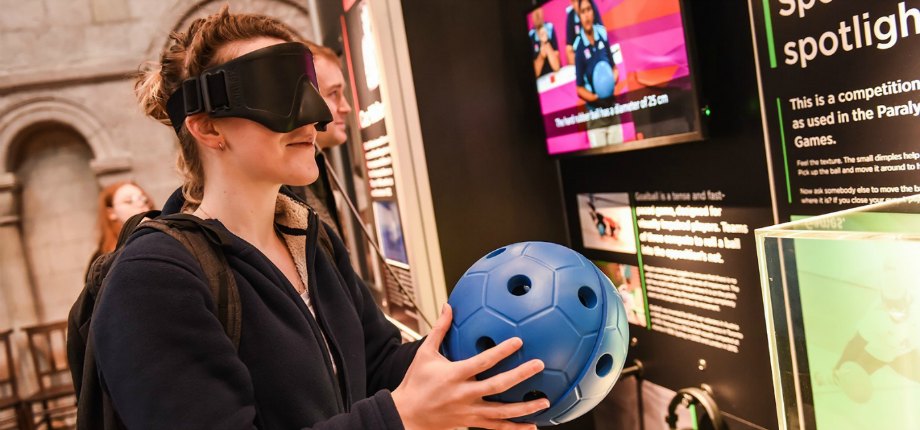Top Tips For Making Your Museum Website Work For You By Harry O’Connor
Essentially you need to reduce friction, that is anything that prevents your users from accomplishing their goal, whilst encouraging them of the benefits of visiting you.
Many of your website viewers are already interested in what you do and have to offer, all you need to do is give them a little nudge and simplify their journey from the virtual to the real.
Follow these simple steps below to turn more views into visitors:
1: Give users a taste of what can be experienced at your museum
The first thing you need to do is ensure that the overall message on your website reflects the real-life visitor experience. Not only does this mean high quality photographs and videos of exhibits and attractions, but also the overall styling of the site needs to reflect what visitors can expect at your museum. The theme and styling should reflect the subject matter and be sensitive to the geography or time period. This way, it will resonate with those most passionate about what you have to offer, those that are more likely to visit and enjoy their time with you. Your visitors are after an experience, so highlight all of the things they can expect during a day out with you. What makes your museum stand out? Do you have a somewhere people can eat? Do you have any special exhibits or attractions at the moment? Let them know all of these things so they can picture themselves there and psychologically start their journey from their computer to your museum.
2: A strong call-to-action
Now that your potential visitors are interested, you need to make it as simple as possible for them to find out how to visit. Have a clear, easy to read button or link directing people to the right page. This call-to-action should ideally be on every page – it could be in the navigation at the top of the site, but other pages should also link to it at relevant places. A big part of the goal with your website is to drive visitor numbers and your site needs to reflect that. You should experiment with the best way of doing this in order to find the most effective solution. The simplest way to do this is to try one way for a set period of time, for example a month, and compare the results to what you had before. Small changes such as adding a photograph of people enjoying a day out at your museum can make a surprising difference. This forms the basis of something called A/B Split testing, something that web developers and SEO experts use to optimise conversion ratios. Your conversion ratio is the percentage of website viewers to physically visit your museum, a number we want to get as high as possible.
3: Make the case to visit
Now that your visitor is on your action page, it is time to sell yourself and demonstrate just why they should visit. Use emotion to make the case to highlight the enjoyment they will get from the experience. Explain how other people like them also enjoyed it, harness social proof in the form of testimonials and reviews from other visitors, preferably with pictures. Include a broad range of your main market segments, for example families, couples, students etc – whoever your museum appeals to the most. If you don’t know who this is, find out as it will be essential in driving more visitor numbers. Give clear directions and instructions, with a map if possible and let people know where they can park and what you have in the form of disabled access. Knowledge of each of these details reduces friction for your visitors and increases your conversion rati
4: Action!
If possible, ask, but don’t force your website visitors to commit to visiting by reserving a ticket at your museum, registering an interest, signing up to your newsletter or following you on social media. Make sure your GDPR compliant website then emails the visitor a confirmation. This process creates not only a reminder, but also a psychological investment and they are far more likely to actually turn up. It has been scientifically proven that when someone writes something down they are much more likely to remember to go through with it. Keep any web forms as simple as possible in order to increase the number of completed forms and reduce user frustration
5: Consider an incentive
It might be worth offering websites visitors a voucher or code that they can use either to discount any entrance fee or used in the gift shop, something special for website visitors that bothered to fill out this form or join your newsletter
6: Track your visitors
There are numerous ways you can do this, the most obvious is by using Google Analytics and using goals. The goals then show you what percentage of visitors to your site actually end up on your action page and filling in your form. From this you can work out which content on your site is working best and leading to a higher conversion. From this you can make adjustments to the rest of the site to further improve the conversion rate to this page. It really is an ongoing process, but get it right and it will make a huge difference to the success of any website.
7: Increase the amount of visitors
The steps above are essentially a sales funnel, and here we are selling a visitor experience. Once you have perfected your sales funnel, all you need to do to increase your sales, or in your case the number of physical visitors to your museum, is to increase the number of people in the funnel in the first place. You can do this with Search Engine Optimisation, something I will explain in more detail in my next article, however, in short make sure to keep the content fresh and relevant on your site.
You should at this point start to receive more visitors to your museum, however to know for sure you need to ask them when they arrive. Without collecting this data it is impossible to know if what you are doing is working.
Consider a simple form at the entrance to your museum with a “what inspired you to visit today?” question along with some other pertinent questions. Please remember GDPR applies to offline as well as online data collection and it would be a good idea to anonymise this data.
The key is to try and be methodical with your approach, be brave enough to try things out and if they don’t work, make adjustments and try again. Eventually you will find a solution for you that brings in the most visitors to your museum.
About Heritage Creative
Heritage Creative is a specialist web design company focused solely on the heritage sector. We are deeply passionate about preserving our heritage through the power of the internet. We pride ourselves on designing outstanding, high return, strategy-led websites that look beautiful whilst being highly accessible and easy to use.
As well as the many wonderful organisations, charities and private companies we have worked with, we also have a wealth of experience working with funding organisations which are the mainstay of much of our heritage work. We have a track record of successfully delivering English Heritage, Lottery Funded and Arts Council supported projects as well as those led by local county councils.
We offer a totally free, no obligation discussion about your website – you can come to our design studio or we are just as happy to come to you!
Heritage Creative Website


